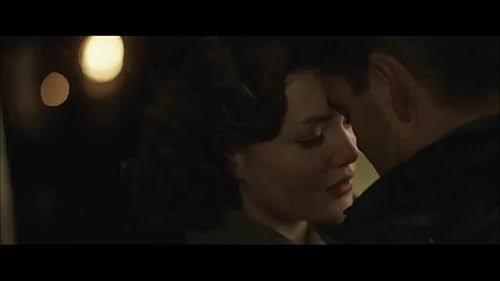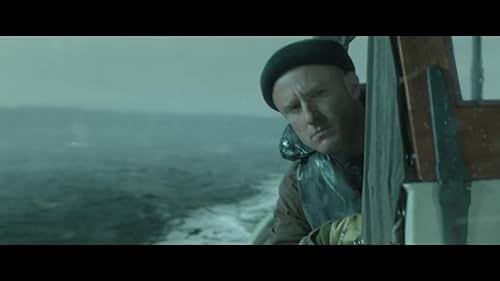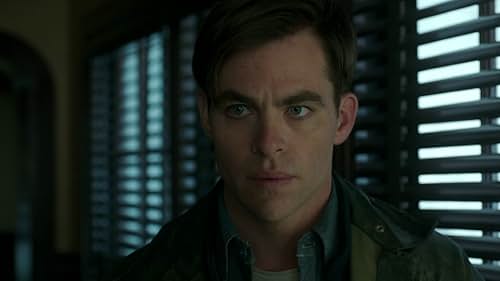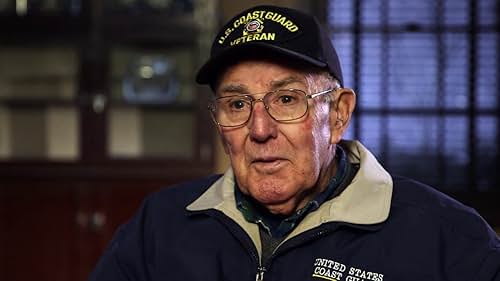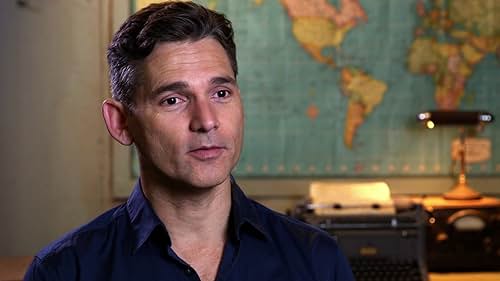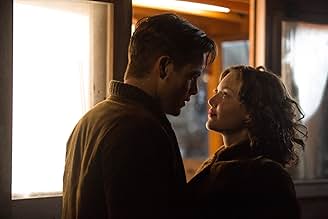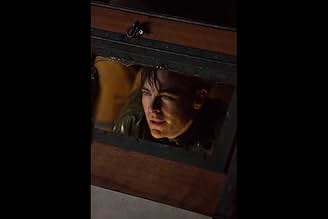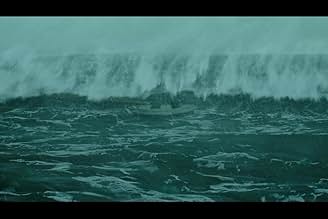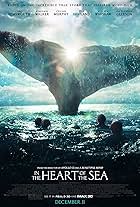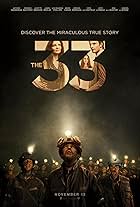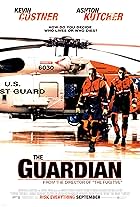The Coast Guard makes a daring rescue attempt off the coast of Cape Cod after a pair of oil tankers are destroyed during a blizzard in 1952.The Coast Guard makes a daring rescue attempt off the coast of Cape Cod after a pair of oil tankers are destroyed during a blizzard in 1952.The Coast Guard makes a daring rescue attempt off the coast of Cape Cod after a pair of oil tankers are destroyed during a blizzard in 1952.
- Awards
- 2 wins
Storyline
Did you know
- TriviaIt is implied that the captain of the Pendleton was responsible for the sinking because of an error in judgment. The Pendleton was a T2 style tanker that, as with other "liberty ships," was built in haste during the Second World War to support the Allies in Britain. The limited building facilities resulting from the rush of shipbuilding resulted in the T2 ships being built in two sections (bow and stern) and later joined at the middle. They had a known issue in that they tended to break in half when facing the combination of cold seas and extreme weather. By insisting on maintaining 7 knots, the captain was hoping to reach a port as quickly as possible, in order to limit the amount of stress on the ship and to avoid metal fatigue that might lead to a break-up. He was balancing the threat of a broken weld versus breaking the ship in two. If he had complied with the engineer's request and dropped to 3 knots, the break-up would have happened anyway, but farther out to sea. It is likely that, while losing his life and that of the other seven crewmen in the bow, his decision made it possible for the lives of the other half to be saved. In contrast to what has been reported elsewhere, the broken weld had little to do with the ship being broken in half. Rather, the weld broke due to the same strain that caused the ship to break in half.
- GoofsThe engine room was not that of a T-2 tanker. T-2 tankers were turbo electric drive which means a steam turbine drives a generator which powers a 6000 hp electric synchronous AC motor. T-2 propulsion is controlled by levers which connect the motor to the generator and control the speed of the generator. If the seawater rose to the level shown in the movie, there would be no propulsion possible because all the necessary pumps and the main motor were located in the lower engine room and would have been submerged. Flooding of the boilers themselves would not have been an issue but the fuel pumps would also have been submerged.
- Quotes
John Stello: The old man don't know what he is doing. He sends you out to die. You can't make it over Chatham bar on a day like this. You can't stay afloat with half a ship neither.
Bernie Webber: Well, Mr. Stello, in the Coast Guard to say you gotta go out. But they don't say you gotta come back in. That's regulation, you know.
- ConnectionsFeatured in Wazzu on Film: Kung Fu Panda 3 and the Finest Hours (2016)
- SoundtracksThe Hucklebuck
Written by Roy Alfred, Andy Gibson, Albert Shubert
Performed by Frank Sinatra with Axel Stordahl and His Orchestra
Courtesy of Columbia Records
By arrangement with Sony Music Licensing
Featured review
"The Finest Hours" presents three stories, or perhaps one story from three perspectives. The stories are perhaps better described as intersecting rather than interwoven as developments in each storyline have relatively little effect on the other story lines other than points of intersection.
The most successful story is one of survival aboard a doomed ship in a fierce storm. Casey Afflect delivers a brilliant performance, possibly the best of his career, as an engineer who must win the respect of the crew and devise a seeming impossible plan to ensure their survival.
But the putative hero of the story is played by Chris Pine as a disgraced seaman thrust into a leadership position who manages a heroic rescue by alternatively slavishly adhering to regulations and blatantly disregarding them, but steadfastly pressing on by sheer obstinacy and succeeding by dumb luck.
The least successful story is a romance between Pine's character and a local girl who somehow manages to afford a car on a switchboard operator's salary, walks through snowdrifts in high heels without slipping or marring her shine, defies convention and embarrasses her boyfriend by proposing marriage, and barges into the all-male preserve of the Coast Guard station to demand that the commander commit an unconscionable act of cowardice in an exchange that might have been ghostwritten by the screenwriter's five- year-old daughter.
Having never read the book, it's difficult to tell what parts were embellished for dramatic impact, but much of the story seems hopelessly contrived. Critical pieces of equipment (radar, compass, radio) malfunction and miraculously return to service as if on cue. At one point, a large group of bystanders race off in support of the rescue effort and one expects them to activate certain items, but strangely nobody does until the love interest does, almost as an afterthought, and everybody else decides to follow suit, leaving the audience wondering why they went there if they didn't intend to do it in the first place. At another somebody shouts out a number referring to a group of people he could not possibly have counted.
This is another film that the #OscarsSoWhite and advocates of gender pay parity would rather audiences not see. It's basically a story of real men in the 1950s male-dominated era doing manly things while the womenfolk stay at home being supportive, raising children and mourning those who sacrificed their lives supporting their families. It was only four years after Eisenhower ended segregation in the military and the Coast Guard and various maritime labor unions were probably about as integrated as the Ku Klux Klan.
But this would never do in the twenty-first century when studios feel pressured to compromise dramatic structure in favor of political correctness. Consequently, two subplots seem to have been added and/or expanded to provide more diversity for audiences who prefer diversity over drama. One involves a black seaman whose cowardice results in the death of a Caucasian who takes him under his wing. The second is the romantic subplot, which is given roughly equal weight and screen time with the two other through lines. The story is not particularly interesting. The girl is a typical chick flick heroine – pretty but not gorgeous, more cherubic than voluptuous, virtuous and steadfast to a fault, with an anachronistic feminist streak. Both subplots could have been easily eliminated. Perhaps the film would not have been quite the critical or commercial disappointment if they had been sharply trimmed or eliminated.
The theme and moral seem weak. A theme concerning luck and happenstance undermines some of the effect, as do several plot contrivances, such as the equipment malfunctions. The episode is supposedly one of the greatest sea rescues in history, but it's presented as the consequence of doggedly plodding along in blind subservience to duty rather than anything one would ordinarily equate with heroism.
Technically, the film is top shelf. The period props, costumes, settings and make-up all seem authentic. There is a refreshing lack of distracting jiggly-cam shots. The special effects seem realistic. It lays on the schmaltz fairly heavily at points, but what can one expect from Disney?
It might have been more compelling if it had concentrated on the survival story, eliminated the love story and trimmed the rescue story.
The most successful story is one of survival aboard a doomed ship in a fierce storm. Casey Afflect delivers a brilliant performance, possibly the best of his career, as an engineer who must win the respect of the crew and devise a seeming impossible plan to ensure their survival.
But the putative hero of the story is played by Chris Pine as a disgraced seaman thrust into a leadership position who manages a heroic rescue by alternatively slavishly adhering to regulations and blatantly disregarding them, but steadfastly pressing on by sheer obstinacy and succeeding by dumb luck.
The least successful story is a romance between Pine's character and a local girl who somehow manages to afford a car on a switchboard operator's salary, walks through snowdrifts in high heels without slipping or marring her shine, defies convention and embarrasses her boyfriend by proposing marriage, and barges into the all-male preserve of the Coast Guard station to demand that the commander commit an unconscionable act of cowardice in an exchange that might have been ghostwritten by the screenwriter's five- year-old daughter.
Having never read the book, it's difficult to tell what parts were embellished for dramatic impact, but much of the story seems hopelessly contrived. Critical pieces of equipment (radar, compass, radio) malfunction and miraculously return to service as if on cue. At one point, a large group of bystanders race off in support of the rescue effort and one expects them to activate certain items, but strangely nobody does until the love interest does, almost as an afterthought, and everybody else decides to follow suit, leaving the audience wondering why they went there if they didn't intend to do it in the first place. At another somebody shouts out a number referring to a group of people he could not possibly have counted.
This is another film that the #OscarsSoWhite and advocates of gender pay parity would rather audiences not see. It's basically a story of real men in the 1950s male-dominated era doing manly things while the womenfolk stay at home being supportive, raising children and mourning those who sacrificed their lives supporting their families. It was only four years after Eisenhower ended segregation in the military and the Coast Guard and various maritime labor unions were probably about as integrated as the Ku Klux Klan.
But this would never do in the twenty-first century when studios feel pressured to compromise dramatic structure in favor of political correctness. Consequently, two subplots seem to have been added and/or expanded to provide more diversity for audiences who prefer diversity over drama. One involves a black seaman whose cowardice results in the death of a Caucasian who takes him under his wing. The second is the romantic subplot, which is given roughly equal weight and screen time with the two other through lines. The story is not particularly interesting. The girl is a typical chick flick heroine – pretty but not gorgeous, more cherubic than voluptuous, virtuous and steadfast to a fault, with an anachronistic feminist streak. Both subplots could have been easily eliminated. Perhaps the film would not have been quite the critical or commercial disappointment if they had been sharply trimmed or eliminated.
The theme and moral seem weak. A theme concerning luck and happenstance undermines some of the effect, as do several plot contrivances, such as the equipment malfunctions. The episode is supposedly one of the greatest sea rescues in history, but it's presented as the consequence of doggedly plodding along in blind subservience to duty rather than anything one would ordinarily equate with heroism.
Technically, the film is top shelf. The period props, costumes, settings and make-up all seem authentic. There is a refreshing lack of distracting jiggly-cam shots. The special effects seem realistic. It lays on the schmaltz fairly heavily at points, but what can one expect from Disney?
It might have been more compelling if it had concentrated on the survival story, eliminated the love story and trimmed the rescue story.
- ginocox-206-336968
- May 11, 2016
- Permalink
- How long is The Finest Hours?Powered by Alexa
Details
- Release date
- Country of origin
- Official sites
- Languages
- Also known as
- Giờ Lành
- Filming locations
- Production companies
- See more company credits at IMDbPro
Box office
- Budget
- $80,000,000 (estimated)
- Gross US & Canada
- $27,569,558
- Opening weekend US & Canada
- $10,288,932
- Jan 31, 2016
- Gross worldwide
- $52,099,090
- Runtime1 hour 57 minutes
- Color
- Sound mix
- Aspect ratio
- 2.39 : 1
Contribute to this page
Suggest an edit or add missing content

